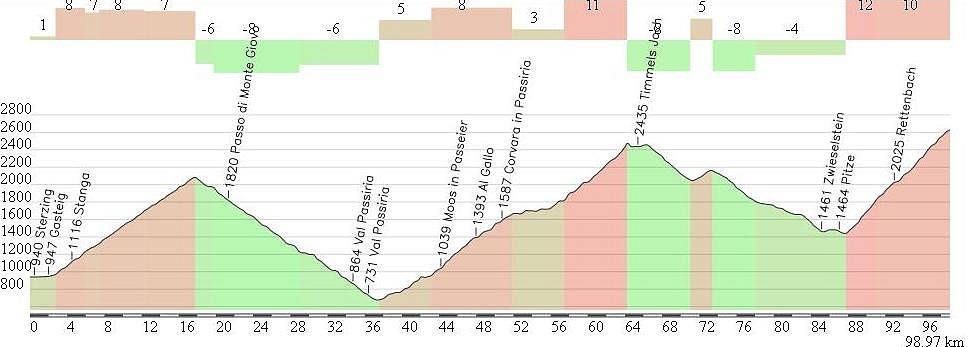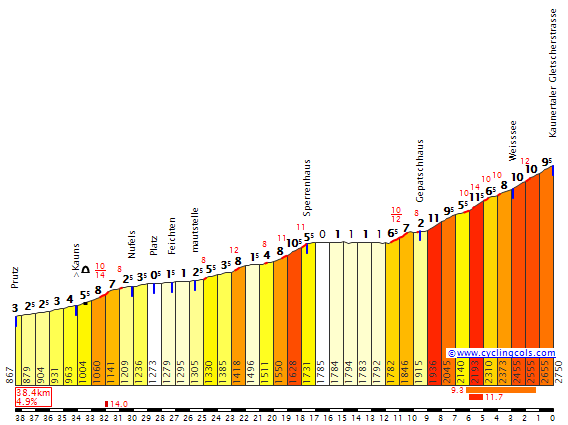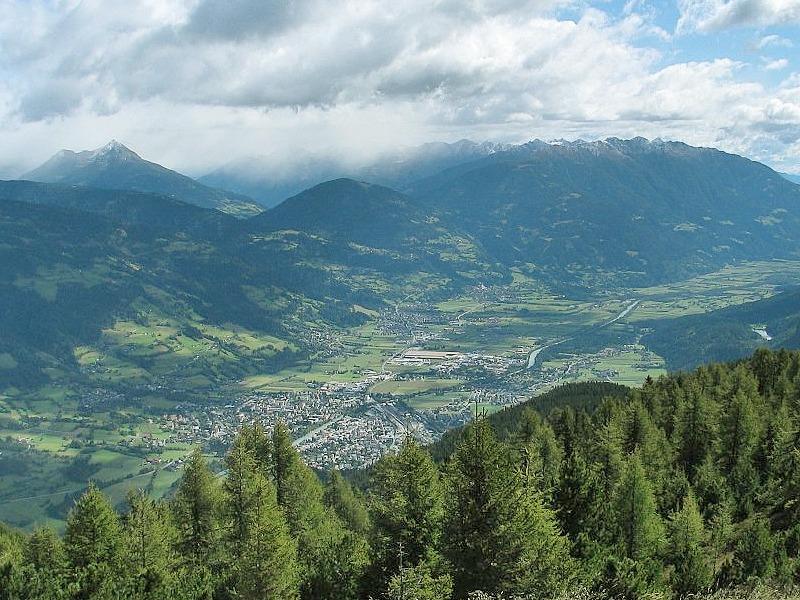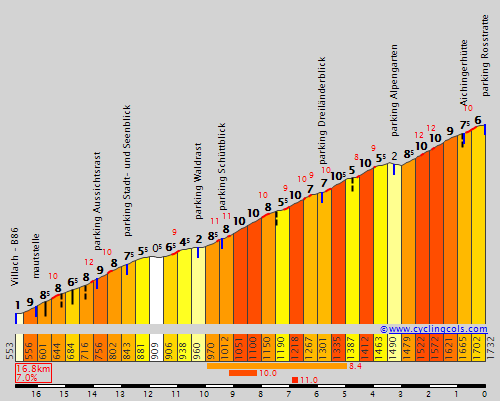- Feb 20, 2010
- 33,093
- 15,333
- 28,180
...Take 2. Can the forums handle the post now the diacritic post cut-off problem has been solved?
As the Tour de France approaches, naturally the Grand Boucle and its associated warmup races take up a great deal of the attentions of the cycling fanbase, for obvious reasons. But while the Tour is going on, a great deal of those focusing on the Giro or the Vuelta will have very little to do. Not many races take place in July, knowing that all eyes are in France. As such, the Österreich Rundfahrt has carved out a nice little niche for itself as "the other July race". It does have flaws; the main one being the repetitiousness of the parcours. The parcours is often not too badly balanced, although the need to finish in Vienna often means that all of the most interesting stages are bundled into the first half of the race, or they race through valleys and past a series of great climbs in order to avoid unbalancing the parcours too much. But despite the extremely broad palette of climbs that Austria has to offer, the selection utilized by the Rundfahrt is extremely narrow. Every year there is an MTF at Kitzbüheler Horn (at Alpenhaus). In 2010 they went a bit further with the Großglockner being used as an MTF for once rather than in its traditional mid-stage slot, and last year they added another MTF at Kühtai Sattel, while this year a new MTF at Dobratsch (the Villacher Hausberg) keeps things interesting.
Other races have taken the opportunity to take advantage of the options Austria provides of course; the Deutschlandtour had notable major mountain stages finishing at the Rettenbachferner in 2005 and 2007, and also at Hochfügen's ski station in 2008. However, since the demise of the Deutschlandtour, these great climbs are unused. The Tour de Suisse has occasionally stepped across the border in order to climb to Serfaus, while Angelo Zomegnan has included jaunts into Italy a couple of times, even he has elected to keep things relatively sanitized, with only the one major GC stage there, the stage to Franz Josefs Höhe in 2011:
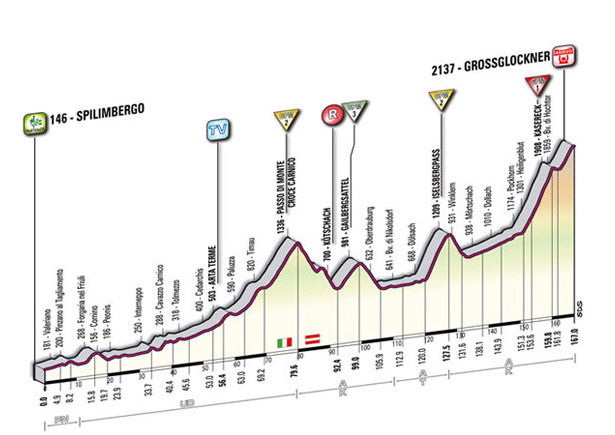
The thing is, with its wide range of climbs and long, flat valley roads, Austria is absolutely the land out of the fantasies of both Javier Guillén and Angelo Zomegnan; the potential HC climbs range from extremely long and gradual, to dramatically inconsistent, to short but insanely, brutally steep; for some reason in Austria there are many roads to well known ski stations that decide that going by shorter routes that average some stupidly steep gradients that would make Unipublic supporters weep with joy. This thread is about discovering those climbs that could make the Österreich Rundfahrt change from "the other July race" to being a genuine killer race to start the build up to the Vuelta for riders doing the Giro-Vuelta double, and allow it to be something more than a consolation prize for those that didn't make the Tour team. It would also be nice to see what the Giro, Tour de Suisse, Giro del Trentino, a revived Deutschlandtour or even the Tour de Slovénie could do if the Austrian connection were to lead to stages across the border.
So, bearing that in mind, let us first consider how to get into Austria, since those non-Austria-specific races will presumably need to do so.
From Germany, there are few truly challenging passes entering Austria, although a few kilometres inside Germany from the border on the route between Oberstdorf and Egg the Riedbergpass clocks in at 6km @ 9,6%, which is pretty serious stuff. Elsewhere, the border between the two countries either corresponds with no passes at all or fairly easy ones - although it is very easy to access the really brutal climbs around Berchtesgaden from Austria - one side of the savage Roßfeld Hohenringstraße even begins in Austria and crosses the border early in the climb. This would connect well with Salzburg and allow the Bayern Rundfahrt to become a real, genuine tough race as I feel it ought to become - even out the 25-30km time trial with a genuinely tough mountain stage, have a hilly puncheur stage up and down around Aschaffenburg and then a couple of sprints.
Although Liechtenstein is almost all mountainous, it does not unfortunately cross into Austria at any great altitude; it is just about flat roads. Switzerland likewise, despite the attentions of the Tour de Suisse, does not have any major passes that enter into the country, although the road from Susch to Landeck crosses the border close to the climb to Norbertshöhe, which usually features on the Tour de Suisse's visits to Serfaus/Fiss/Ladis ski area. Also, the toughest route to Samnaun is the route which passes through Austria off of this route, even though the climb lies in Switzerland; there are two parallel routes into the town.
Italy offers the best opportunities in respect of entering into Austria via tough climbing; while Reschenpass is long and very gradual, it links to Stelvio; however it arrives near Norbertshöhe and has the same flaws as the Swiss route. Much more interesting is the next pass, the extremely savage Passo Rombo. Known to Austrians as Timmelsjoch, this is the toughest pass between Italy and Austria; the Austrian side we will meet later, but the Italian side is a killer 29,3km @ 6,1%, and that with some flat in the middle!!!
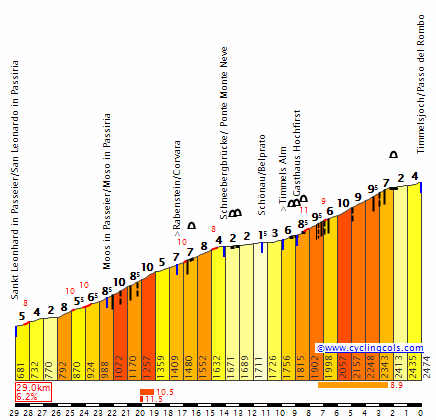
Yes, that's HC in anyone's language. East of that lies the Brennerpass, the most used, as the main road connecting Innsbruck to Meran, Bozen and Trento. Next up is the two-stepped Passo Stalle, which is pretty tough from its Italian side (12km @ 6,8%), however the Austrian side only averages a couple of percent on a long trip. However I am a fan of this climb for its inconsistency and also as it passes the Antholz biathlon stadium. The border can be crossed by a couple of flatter roads and the less serious Plöckenpass, but there are still some tough crossings to come, most notably the 13,4km @ 7,2% that makes up the Passo di Pramollo:
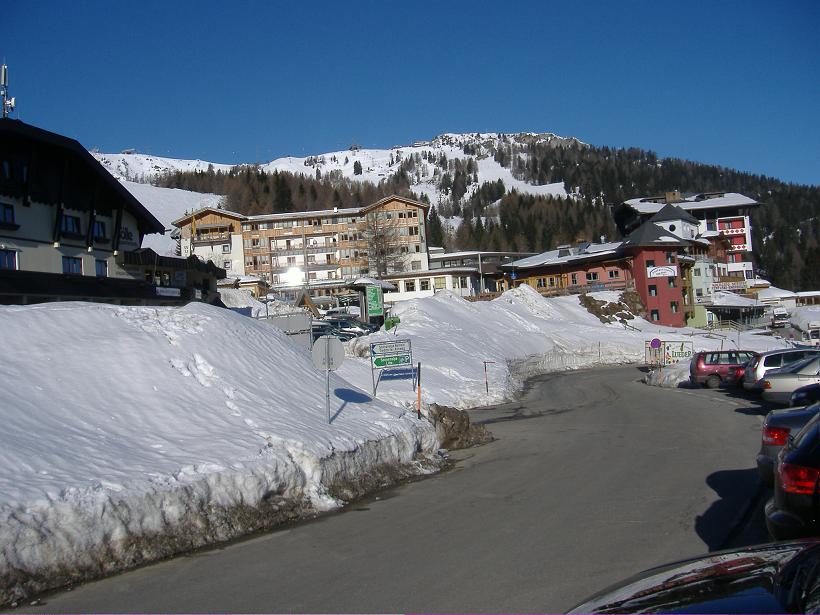
Known to Austrians as Naßfeldpass, their side of the climb is, unlike with Rombo and Reschenpass, the tougher one. Personally I would prefer to go from Austria to Italy with this one; Naßfeldpass->Passo del Cason di Lanza->Forcella di Lius deposits us at Sutrio, so we could climb the easier side of the Zoncolan from there, or do Sella Valcalda->Ovaro.
Finally, the Slovenians can cross into Austria via the fairly straightforward Wurzenpass, or the soaring, swooping Loiblpass, although once more the Austrian side is the tougher one. Further east still, the Seefeldsattel and Paulitschsattel are next door neighbours to one another and would allow an exciting brief interlude into Austria in the Tour de Slovénie. The smaller Radlpass (just 650m over sea level) signals our last pass of any real difficulty to enter Austria; the Austro-Hungarian, Austro-Slovak and Austro-Czech borders need not detain us here. After all, we're looking for real high difficulty mountains. The kind that Zomegnan approves of. And now we've found our way into Austria, let's look for them.
As the Tour de France approaches, naturally the Grand Boucle and its associated warmup races take up a great deal of the attentions of the cycling fanbase, for obvious reasons. But while the Tour is going on, a great deal of those focusing on the Giro or the Vuelta will have very little to do. Not many races take place in July, knowing that all eyes are in France. As such, the Österreich Rundfahrt has carved out a nice little niche for itself as "the other July race". It does have flaws; the main one being the repetitiousness of the parcours. The parcours is often not too badly balanced, although the need to finish in Vienna often means that all of the most interesting stages are bundled into the first half of the race, or they race through valleys and past a series of great climbs in order to avoid unbalancing the parcours too much. But despite the extremely broad palette of climbs that Austria has to offer, the selection utilized by the Rundfahrt is extremely narrow. Every year there is an MTF at Kitzbüheler Horn (at Alpenhaus). In 2010 they went a bit further with the Großglockner being used as an MTF for once rather than in its traditional mid-stage slot, and last year they added another MTF at Kühtai Sattel, while this year a new MTF at Dobratsch (the Villacher Hausberg) keeps things interesting.
Other races have taken the opportunity to take advantage of the options Austria provides of course; the Deutschlandtour had notable major mountain stages finishing at the Rettenbachferner in 2005 and 2007, and also at Hochfügen's ski station in 2008. However, since the demise of the Deutschlandtour, these great climbs are unused. The Tour de Suisse has occasionally stepped across the border in order to climb to Serfaus, while Angelo Zomegnan has included jaunts into Italy a couple of times, even he has elected to keep things relatively sanitized, with only the one major GC stage there, the stage to Franz Josefs Höhe in 2011:

The thing is, with its wide range of climbs and long, flat valley roads, Austria is absolutely the land out of the fantasies of both Javier Guillén and Angelo Zomegnan; the potential HC climbs range from extremely long and gradual, to dramatically inconsistent, to short but insanely, brutally steep; for some reason in Austria there are many roads to well known ski stations that decide that going by shorter routes that average some stupidly steep gradients that would make Unipublic supporters weep with joy. This thread is about discovering those climbs that could make the Österreich Rundfahrt change from "the other July race" to being a genuine killer race to start the build up to the Vuelta for riders doing the Giro-Vuelta double, and allow it to be something more than a consolation prize for those that didn't make the Tour team. It would also be nice to see what the Giro, Tour de Suisse, Giro del Trentino, a revived Deutschlandtour or even the Tour de Slovénie could do if the Austrian connection were to lead to stages across the border.
So, bearing that in mind, let us first consider how to get into Austria, since those non-Austria-specific races will presumably need to do so.
From Germany, there are few truly challenging passes entering Austria, although a few kilometres inside Germany from the border on the route between Oberstdorf and Egg the Riedbergpass clocks in at 6km @ 9,6%, which is pretty serious stuff. Elsewhere, the border between the two countries either corresponds with no passes at all or fairly easy ones - although it is very easy to access the really brutal climbs around Berchtesgaden from Austria - one side of the savage Roßfeld Hohenringstraße even begins in Austria and crosses the border early in the climb. This would connect well with Salzburg and allow the Bayern Rundfahrt to become a real, genuine tough race as I feel it ought to become - even out the 25-30km time trial with a genuinely tough mountain stage, have a hilly puncheur stage up and down around Aschaffenburg and then a couple of sprints.
Although Liechtenstein is almost all mountainous, it does not unfortunately cross into Austria at any great altitude; it is just about flat roads. Switzerland likewise, despite the attentions of the Tour de Suisse, does not have any major passes that enter into the country, although the road from Susch to Landeck crosses the border close to the climb to Norbertshöhe, which usually features on the Tour de Suisse's visits to Serfaus/Fiss/Ladis ski area. Also, the toughest route to Samnaun is the route which passes through Austria off of this route, even though the climb lies in Switzerland; there are two parallel routes into the town.
Italy offers the best opportunities in respect of entering into Austria via tough climbing; while Reschenpass is long and very gradual, it links to Stelvio; however it arrives near Norbertshöhe and has the same flaws as the Swiss route. Much more interesting is the next pass, the extremely savage Passo Rombo. Known to Austrians as Timmelsjoch, this is the toughest pass between Italy and Austria; the Austrian side we will meet later, but the Italian side is a killer 29,3km @ 6,1%, and that with some flat in the middle!!!

Yes, that's HC in anyone's language. East of that lies the Brennerpass, the most used, as the main road connecting Innsbruck to Meran, Bozen and Trento. Next up is the two-stepped Passo Stalle, which is pretty tough from its Italian side (12km @ 6,8%), however the Austrian side only averages a couple of percent on a long trip. However I am a fan of this climb for its inconsistency and also as it passes the Antholz biathlon stadium. The border can be crossed by a couple of flatter roads and the less serious Plöckenpass, but there are still some tough crossings to come, most notably the 13,4km @ 7,2% that makes up the Passo di Pramollo:

Known to Austrians as Naßfeldpass, their side of the climb is, unlike with Rombo and Reschenpass, the tougher one. Personally I would prefer to go from Austria to Italy with this one; Naßfeldpass->Passo del Cason di Lanza->Forcella di Lius deposits us at Sutrio, so we could climb the easier side of the Zoncolan from there, or do Sella Valcalda->Ovaro.
Finally, the Slovenians can cross into Austria via the fairly straightforward Wurzenpass, or the soaring, swooping Loiblpass, although once more the Austrian side is the tougher one. Further east still, the Seefeldsattel and Paulitschsattel are next door neighbours to one another and would allow an exciting brief interlude into Austria in the Tour de Slovénie. The smaller Radlpass (just 650m over sea level) signals our last pass of any real difficulty to enter Austria; the Austro-Hungarian, Austro-Slovak and Austro-Czech borders need not detain us here. After all, we're looking for real high difficulty mountains. The kind that Zomegnan approves of. And now we've found our way into Austria, let's look for them.



